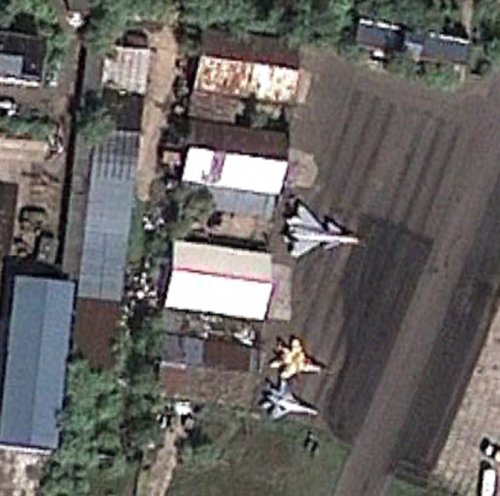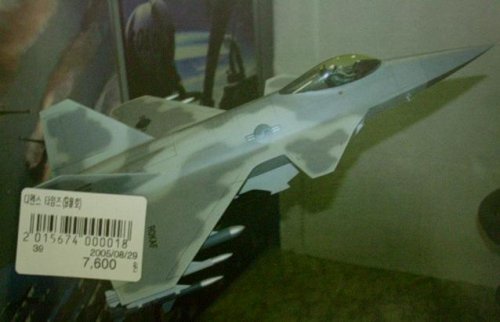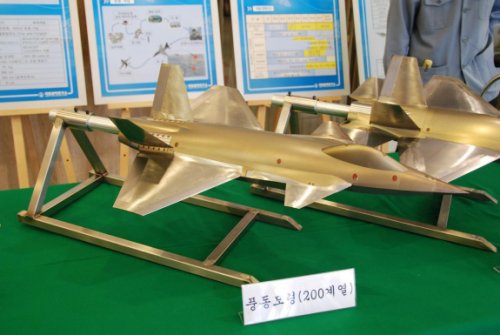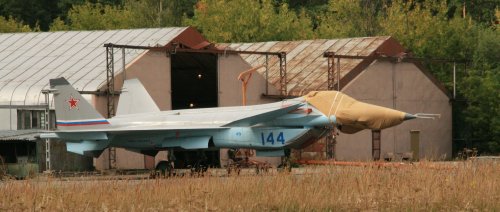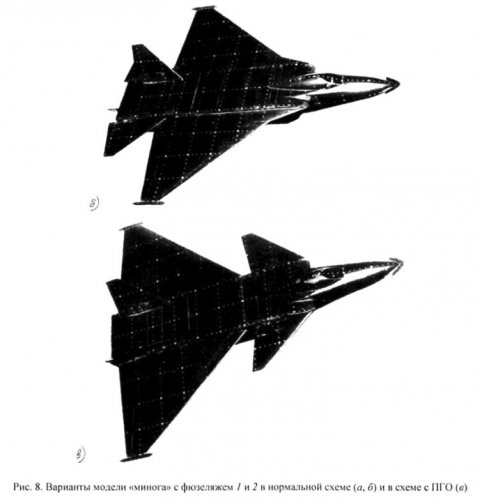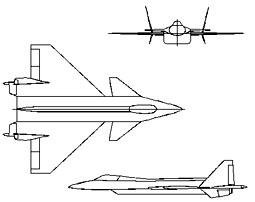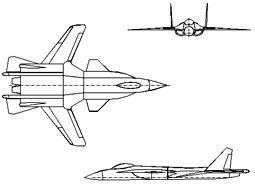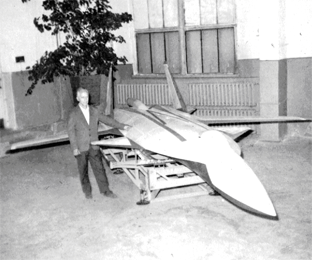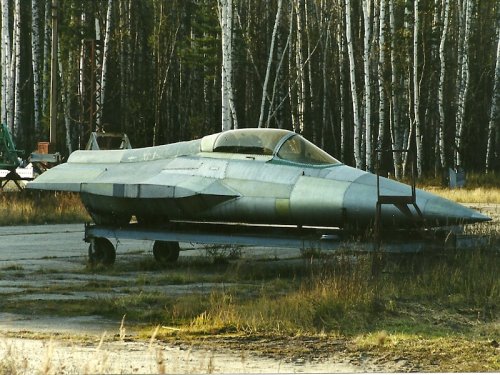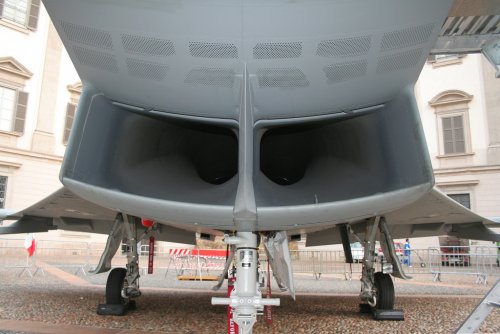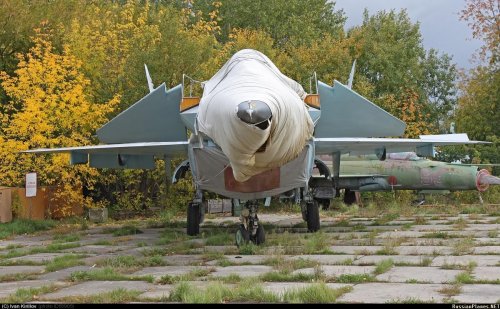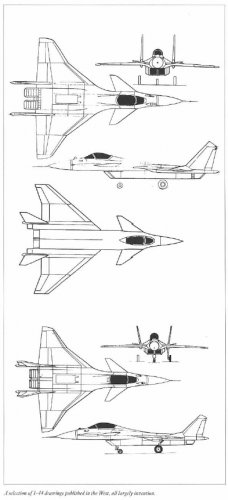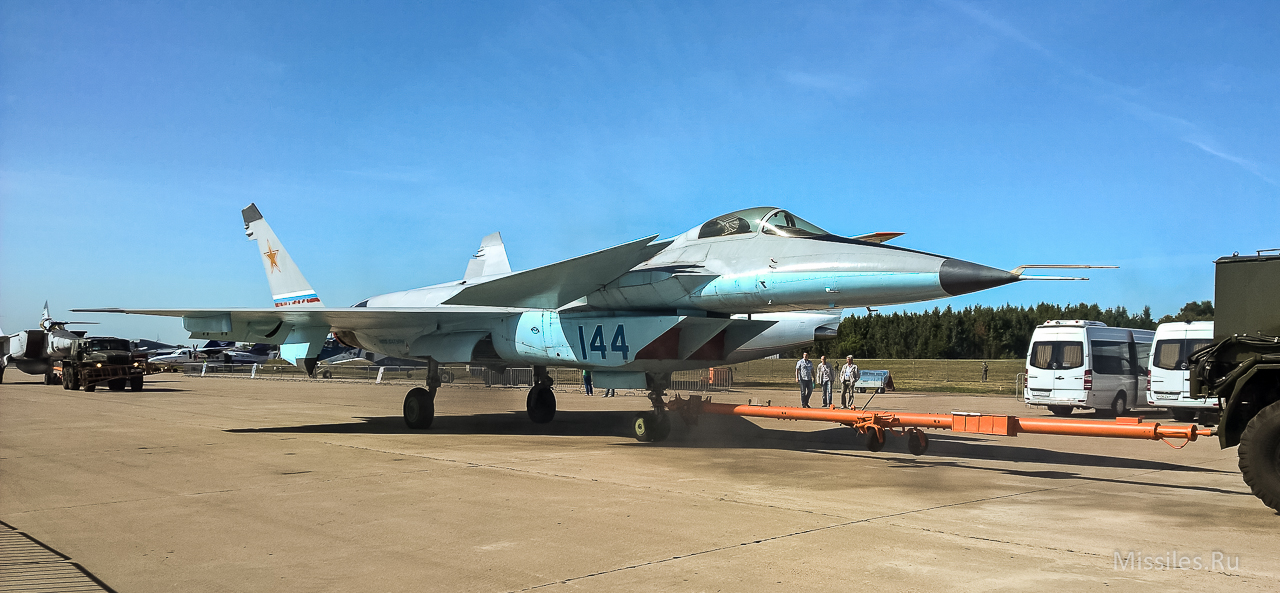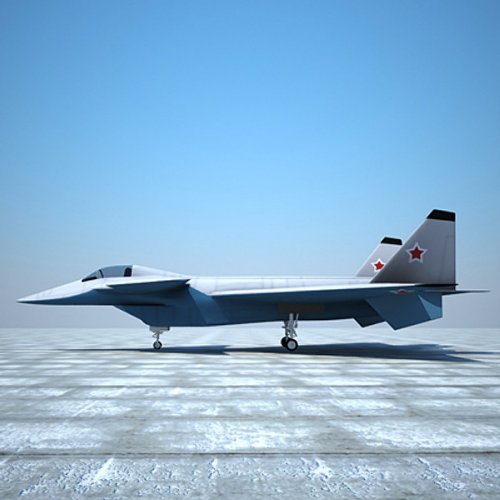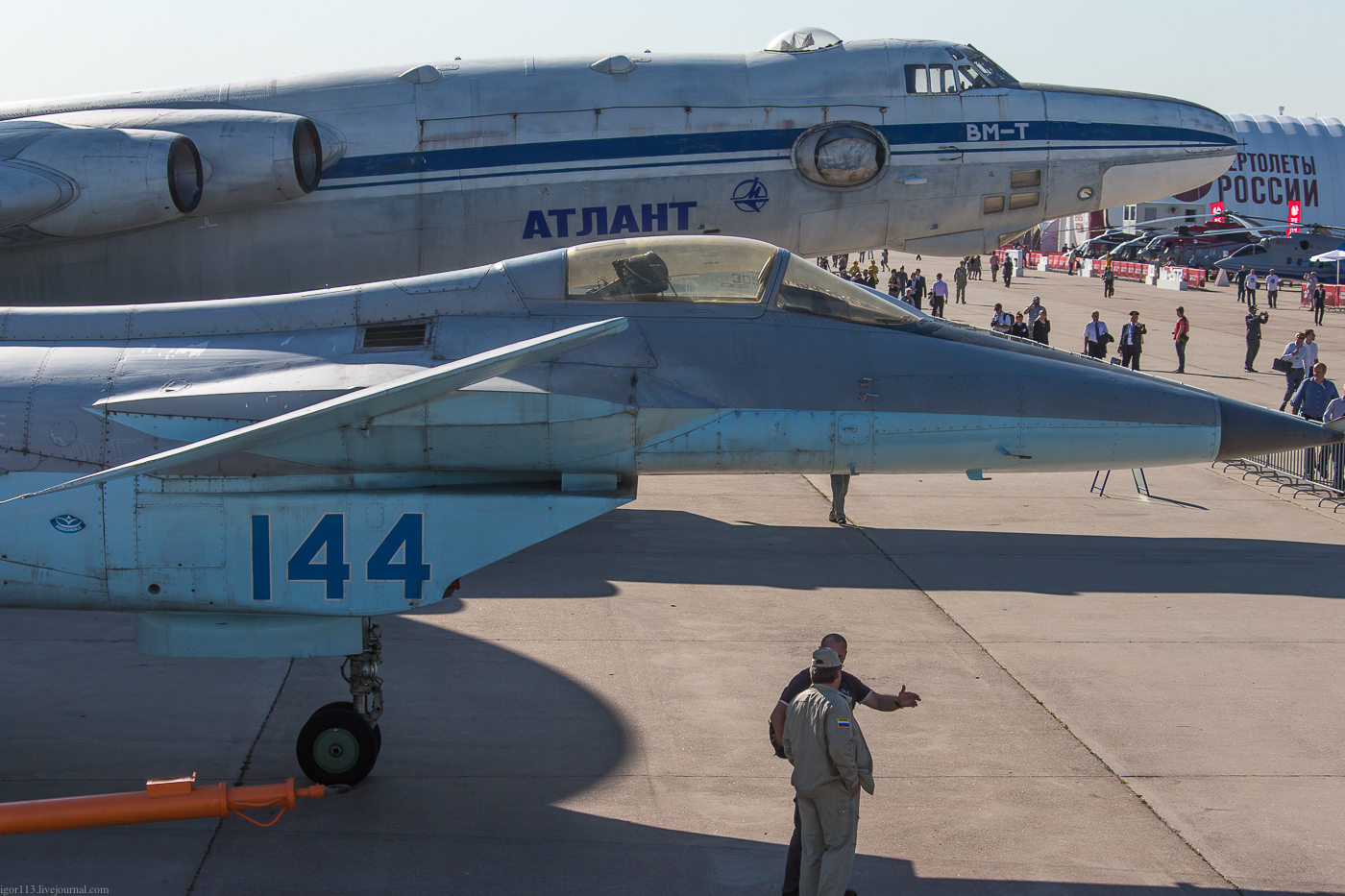In 1987-1988, we received an order from the OKB. PO Dry for the development and construction of such a model to dynamically flying fighter of the 5th generation, which then did not have another name. Our model of this aircraft called SLM-22. According to the recommendations of experts and TsAGI OKB. PO Dry model should have a scale 1/4 of the future of the aircraft, forward-swept wing, similar to the control system. Mass model increased to 900 kg. It was necessary to revise the method of landing such a heavy model and the way to start, as we apply methods before landing and launch from an aircraft carrier for such weight model and its dimensions were not good.
During 1987, was built two models of SLM-22 and executed on these three flights. These models do not have a motor. Running the models was carried out with the help of a helicopter, which is raised to a height of model 6 ... 8 km. The model was suspended from a helicopter on the cable length of 40m. After separation from the suspension of the helicopter model was part of a nose dive and as a required rate of transition to an investigational flight mode. Landing models used the following scheme: after the end of the planned research while reducing to a dangerous height automatically produced from the tail section of a torus of synchrotron-parachute. After slowing down a flight or fall pattern to the desired values produced main landing parachute. Model landed horizontally on three shock absorber. Delivery model after flight experiments on the so-called technical position or, more simply, the base was carried out also on the suspension of the helicopter. Received the materials testing, OKB. PO Sukhoi has made significant changes in the external forms of the created aircraft.
before us was given the task - to quickly develop and build a new model for the aircraft and install it on a jet engine. Subject to change almost all of the external contour. Practically had to build a new flying dynamically similar model.
At the end of 1991, this model was built. It was called we SLM-32. It was a model of the future fighter P-37. Model made eight flights was obtained extensive data on the characteristics of the simulated aircraft. According to the results of flight tests of the model have been made significant adjustments to the design of future aircraft.
During these years, OKB. AI Mikoyan began working on the fifth generation fighter. We also received an order to build a flying dynamically similar model designed aircraft, which had the name "5.12". Future aircraft had scheme "duck" with a front driven horizontal tail. According to the technical task of the model must have a scale 1/4 of the future aircraft and weight 900 kg.
For OKB AI Mikoyan work was carried out in 1979 - 1989 years. Models in this series are designed for the MiG-29, MiG-29UB, MiG-29S. Just tested 13 variants of models with different variants of the geometry of the aircraft, avionics, controls, external suspension, mass and center of gravity. Models were carried out following the program experi-mental studies:
study of stability, controllability, corkscrew, inference methods of spin, in particular by the "swing";
research on the effectiveness of controls, including vortex generators;
research new methods for improving the stability and councils-lyaemosti at high angles of attack (mode "super maneuverability").
We have built two model airplane 5.12 which we called DM 5.12. Models do not have the motor. Way to start a flight and landing were similar to flying model SLM-32. Unlike the SLM-32 - on the number of modes used not one parachute large area, and three conventional rescue parachute. So it was cheaper. First as shock absorbers used inflatable bags. Research for flying model aircraft for 5.12 took place in the period 1987-1992. Was performed 10 operations of this model. Worked out the layout of the future aircraft control laws, and most importantly - the flights were investigated at high angles of attack at stall and a corkscrew. The results obtained make it possible-poured to make substantial modifications to the aircraft of the future.

